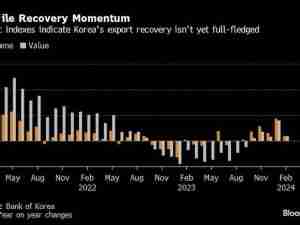The elephant in the room for markets this week is the trade war with China, and investors are waiting to see which way it might step.
President Donald Trump is said to be ready to push ahead with tariffs on $200 billion of Chinese imports after the deadline for public input ended Thursday, a move that could rattle traders of everything from U.S. stocks to soybeans and offset some of the American economy’s long strides forward.
“It’ll cause some volatility in the short run,” Paul Nolte, a portfolio manager at Kingsview Asset Management, said by phone. “We’re just now starting to see from an economic perspective some of the impact of trade and tariffs, so if we go through with this and China does retaliate, we won’t see the effects of it until probably the first quarter.”
Here are some of the markets that have taken it on the chin as trade tensions mounted over the past few months and may be vulnerable as protectionism ramps up:
U.S. Stocks
American manufacturers—from Boeing Co. to Catepillar Inc.—that rely on international sales and supply chains are one of the most fragile sectors in the trade spat. The industrial companies have underperformed the S&P 500 Index by about 5 percentage points since the start of the year.
Consumer staples are another corner of the market that has taken a beating from Chinese tariffs. The sellers of everyday items are reeling as household goods from refrigerators and freezers to cutlery and towels are about to become more expensive. The sector is down about 5 percent year-to-date, while the S&P 500 is up about 7 percent.
On a broader scale, U.S. small caps have outperformed global stocks and are seen as being relatively immune from trade disputes due to their elevated domestic exposure. This disparity has also happened as the dollar has strengthened amid robust economic activity, continued monetary tightening from the Federal Reserve, and turmoil in some emerging-market economies.
China Tech
One of the main targets of the Trump administration’s trade tactics has been the Chinese technology sector. The U.S. proposed tariffs in March in response to “unfair trade practices” tied to technology transfer, intellectual property and innovation. Since then, Chinese companies have severely underperformed their American counterparts. Chinese technology giants Baidu, Alibaba, and Tencent account for roughly 12 percent of the MSCI Emerging Markets Index, meaning the benchmark global index may go along for the ride.
EM Rout
Emerging markets may be the most unnerved by the tensions between trade powers, as they also grapple with a stronger dollar. The MSCI EM index, of which roughly one-third are Chinese and Hong Kong-listed stocks, is down about 20 percent since reaching the highest in more than a decade in January.
China’s Currency
The yuan has been closely watched by investors amid trade tensions. The greenback has gained as much as 11 percent against the country’s offshore currency since the pair reached a year low in March. The weakness has helped to counteract some of the U.S. tariffs, yet the Chinese government has also been weary of capital flight.
Soybeans
One of the biggest U.S. agricultural exports to China caught up in the tit-for-tat is soybeans. The commodity has tumbled about 22 percent since April when the Trump administration said it would levy an additional 25 percent tariff on imports of 106 U.S. products, including the American staple.
So as traders wait for Trump’s next move, some wonder if the president will reassess the wisdom of a trade war if markets continue to take a beating.
“This president is clearly more tuned to the stock market than previous presidents. And in that sense, the stock market could be the new vigilante,” Hank Smith, the co-chief investment officer at Haverford Trust Co., which manages $8 billion, said by phone. “If you saw a swift decline in the stock market based off of a Trump action, I think he would pay attention to that. It’s almost a put if you will.”







